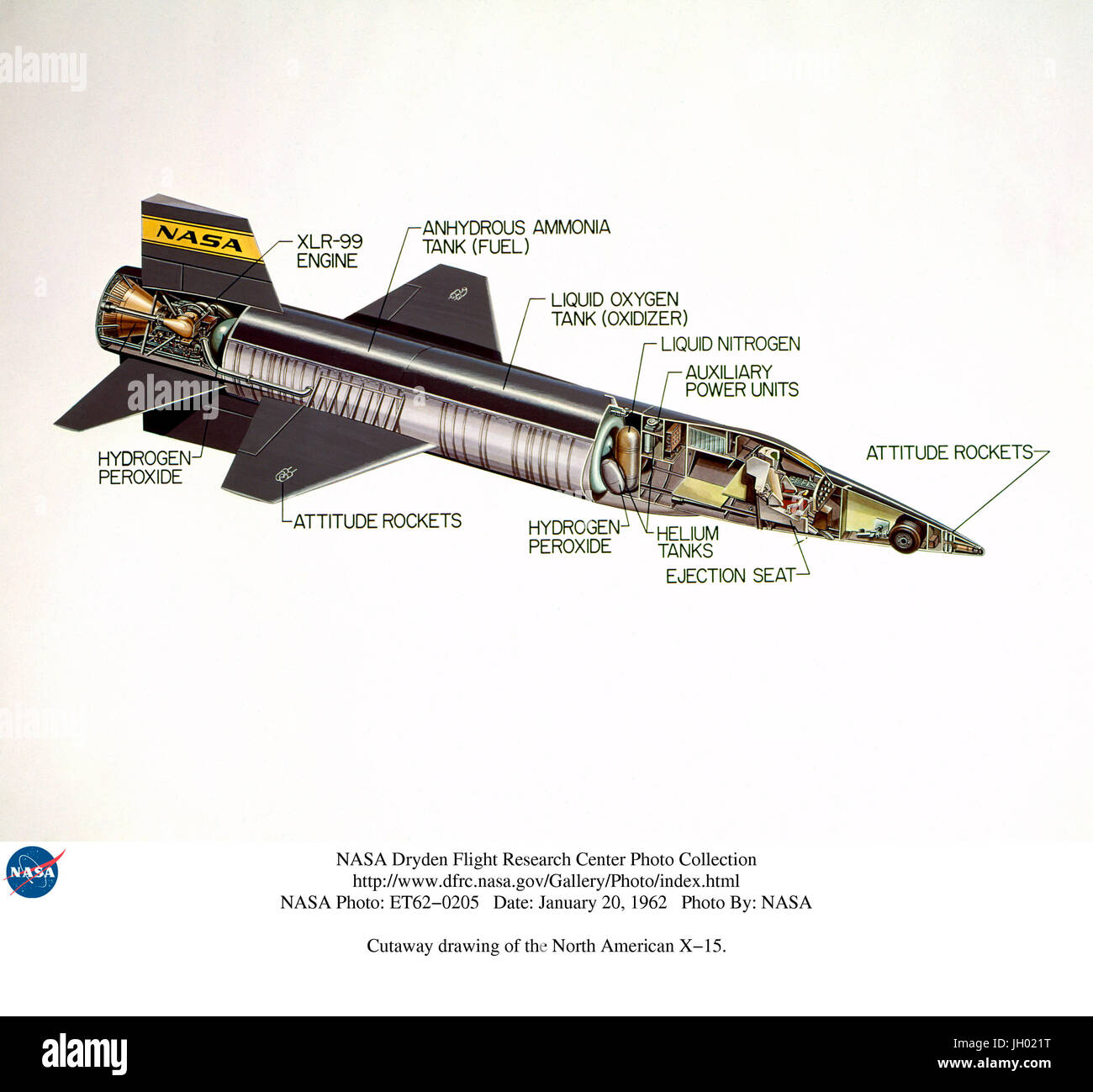An unofficial motto of flight research in the 1940s and 1950s was "higher and faster." By the late 1950s the last frontier of that goal was hypersonic flight (Mach 5+) to the edge of space. It would require a huge leap in aeronautical technology, life support systems and flight planning. The North American X-15 rocket plane was built to meet that challenge. It was designed to fly at speeds up to Mach 6, and altitudes up to 250,000 ft. The aircraft went on to reach a maximum speed of Mach 6.7 and a maximum altitude of 354,200 ft.

Image details
Contributor:
American Photo Archive / Alamy Stock PhotoImage ID:
JH021TFile size:
24 MB (688.3 KB Compressed download)Releases:
Model - no | Property - noDo I need a release?Dimensions:
3000 x 2791 px | 25.4 x 23.6 cm | 10 x 9.3 inches | 300dpiLocation:
NASAMore information:
This image could have imperfections as it’s either historical or reportage.
An unofficial motto of flight research in the 1940s and 1950s was "higher and faster." By the late 1950s the last frontier of that goal was hypersonic flight (Mach 5+) to the edge of space. It would require a huge leap in aeronautical technology, life support systems and flight planning. The North American X-15 rocket plane was built to meet that challenge. It was designed to fly at speeds up to Mach 6, and altitudes up to 250, 000 ft. The aircraft went on to reach a maximum speed of Mach 6.7 and a maximum altitude of 354, 200 ft. Looking at it another way, Mach 6 is about one mile per second, and flight above 264, 000 ft. qualifies an Air Force pilot for astronaut wings.The X-15 was a rocket-powered aircraft 50 ft long with a wingspan of 22 ft. It was a missile-shaped vehicle with an unusual wedge-shaped vertical tail, thin stubby wings, and unique side fairings that extended along the side of the fuselage. The X-15 weighed about 14, 000 lb empty and approximately 34, 000 lb at launch. The XLR-99 rocket engine, manufactured by Thiokol Chemical Corp., was pilot controlled and was capable of developing 57, 000 lb of thrust. North American Aviation built three X-15 aircraft for the program.The X-15 research aircraft was developed to provide in-flight information and data on aerodynamics, structures, flight controls, and the physiological aspects of high-speed, high-altitude flight. This archival print is available in the following sizes: 8" x 10" $15.95 w/ FREE SHIPPING 11" x 14" $23.95 w/ FREE SHIPPING 16" x 20" $59.95 w/ FREE SHIPPING 20" x 24" $99.95 w/ FREE SHIPPING * The American Photoarchive watermark will not appear on your print.